Can I use my starter straight out of the fridge? It's possible - but you really shouldn't. While it might seem convenient to bake with a cold starter, for consistently delicious sourdough bread, it's better not to use your starter straight from the fridge.

Jump to:
- Why you shouldn't use your starter straight from the refrigerator
- What is a sourdough starter?
- How the refrigerator affects your sourdough starter
- What is the ideal temperature for fermentation?
- When should I feed my starter before refrigerating?
- How to activate your starter for the best results
- What you need
- Why you should weigh your ingredients
- Step-by-step instructions
- Signs indicating that my starter is ready for baking:
- Why it’s best to wait until your starter has doubled before using it
- When it’s OK to bake with your starter from the fridge
- Help!!! I keep feeding my starter but it won’t rise
- FAQs
- More helpful baking guides
Why you shouldn't use your starter straight from the refrigerator
Slows down the activity of yeast
Cold temperatures weaken yeast, leading to slower activity and longer fermentation times. While experienced bakers might manage, for beginners relying on time cues, this could result in under fermented dough and gummy bread.
Excessive acidity negatively affects dough development
Refrigeration slows down yeast, but bacterial activity persists, leading to increased acidity in the starter. Too much acidity can break gluten bonds, causing the dough to tear. This makes it hard for the dough to trap carbon dioxide, resulting in flat, dense bread.
Less flavorful bread
Highly acidic environments actually discourage lactic acid bacteria from producing the byproducts that impart the deep and tangy flavors we love in sourdough, resulting in bread that tastes blander.
Inconsistent quality
A mature starter typically peaks 4 to 6 hours after feeding, aligning with dough fermentation. However, rise times for a cold starter can be unpredictable, making it difficult to refine your baking skills and achieve good quality results.
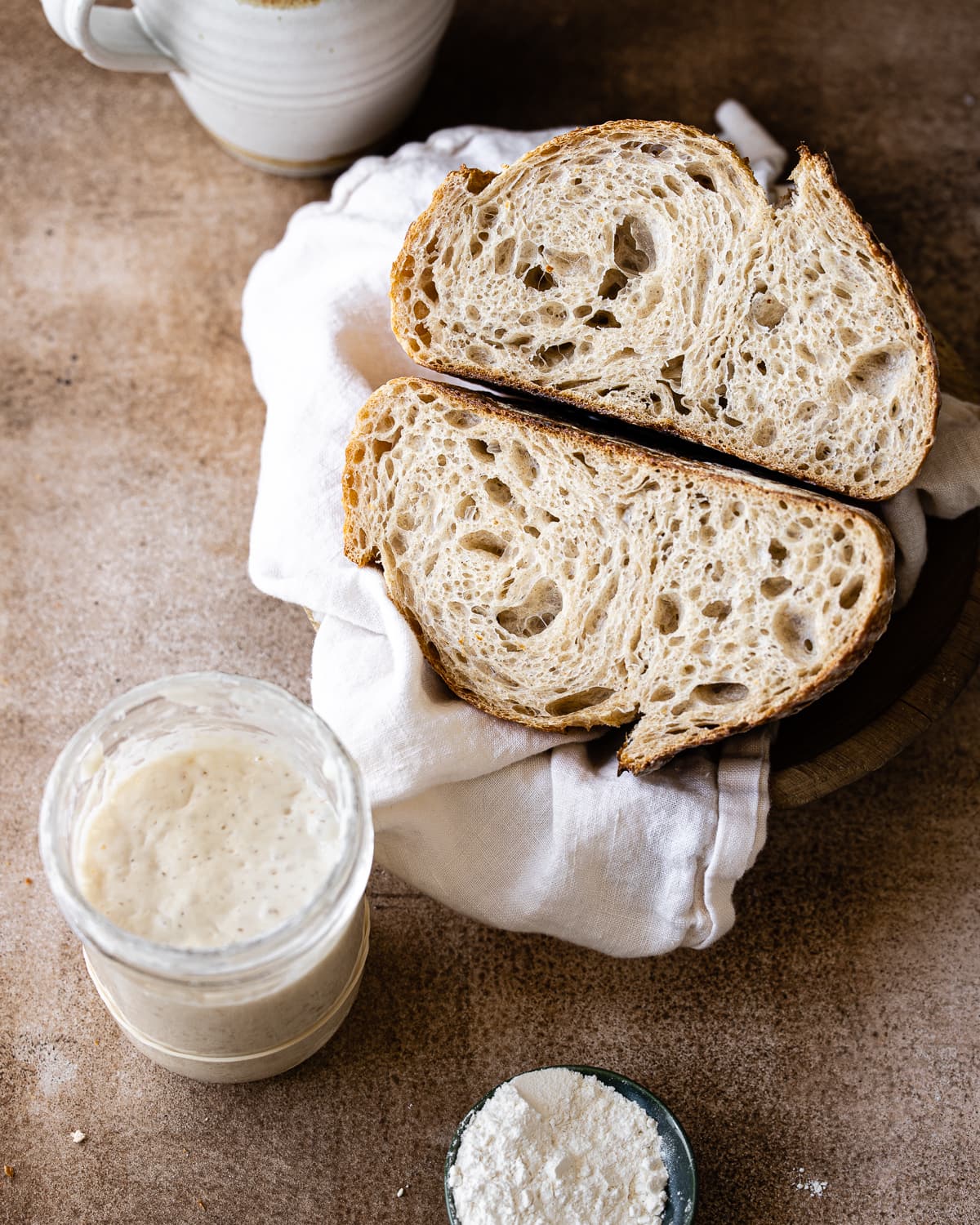
What is a sourdough starter?
A sourdough starter is simply a mixture of flour and water. As it undergoes fermentation, this mixture evolves into a lively ecosystem teeming with wild yeast and bacteria. When nourished and maintained, this dynamic community gains strength, ultimately enabling it to leaven dough and create delicious bread.
How the refrigerator affects your sourdough starter
The cold temperature of the refrigerator slows down the metabolic activity and the growth of yeast. However, bacterial activity proceeds at the same pace, which means acid production also continues.
As your starter rises, it metabolizes sugars in the flour that you’ve fed it. If you’ve kept a starter for sometime, you’ll know that it can go through its food source in a matter of hours at room temperature. In the refrigerator, the fermentation process becomes much slower and this food can last a couple of days or even up to a few weeks. This makes the refrigerator a great long term storage method for a mature starter.
What is the ideal temperature for fermentation?
The ideal temperature for dough fermentation is between 75 to 78 F.
This is when yeast is at its most active and efficient, leading to optimal rise and flavor development in your bread. Yeast activity is influenced by temperature, with higher temperatures accelerating fermentation, while lower temperatures slow down fermentation.
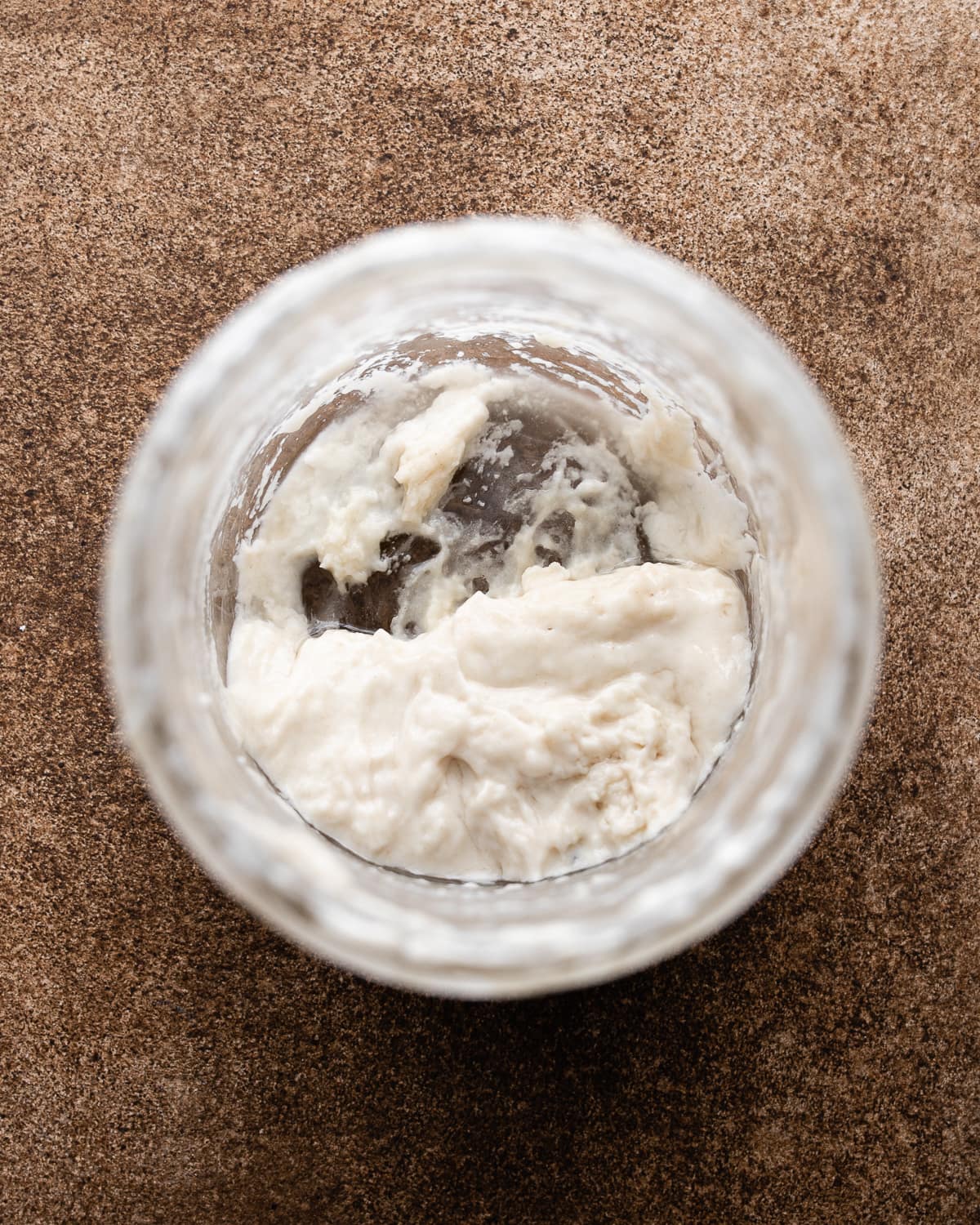
Sourdough starter straight from the refrigerator resembles a paste, flat with no bubbles
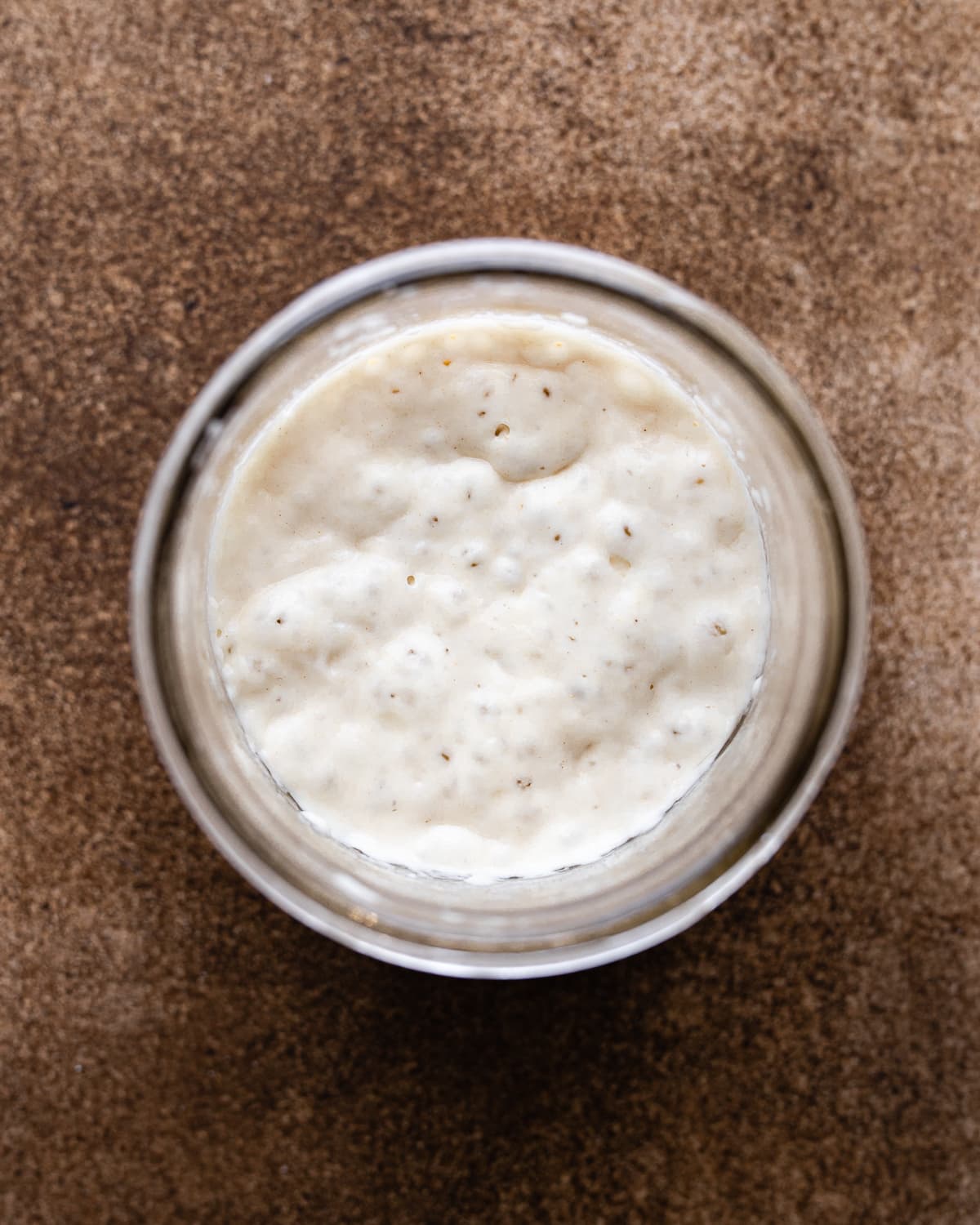
24 hours after the first feeding, showing signs of fermentation with an even distribution of bubbles throughout
When should I feed my starter before refrigerating?
Refrigerate it immediately after adding fresh flour. This is when it is least acidic, and will help maintain the depth of flavor of your sourdough starter.
Have trouble deciding what to feed your starter? Check out my post on The Best Flour for Sourdough Starter and Bread.
How to activate your starter for the best results
Think of activating your starter as sharpening a knife, it gives the microorganisms in your culture a boost so they are ready for the task at hand, it brings out your starter's best characteristics and helps increase your chances of a great bake.
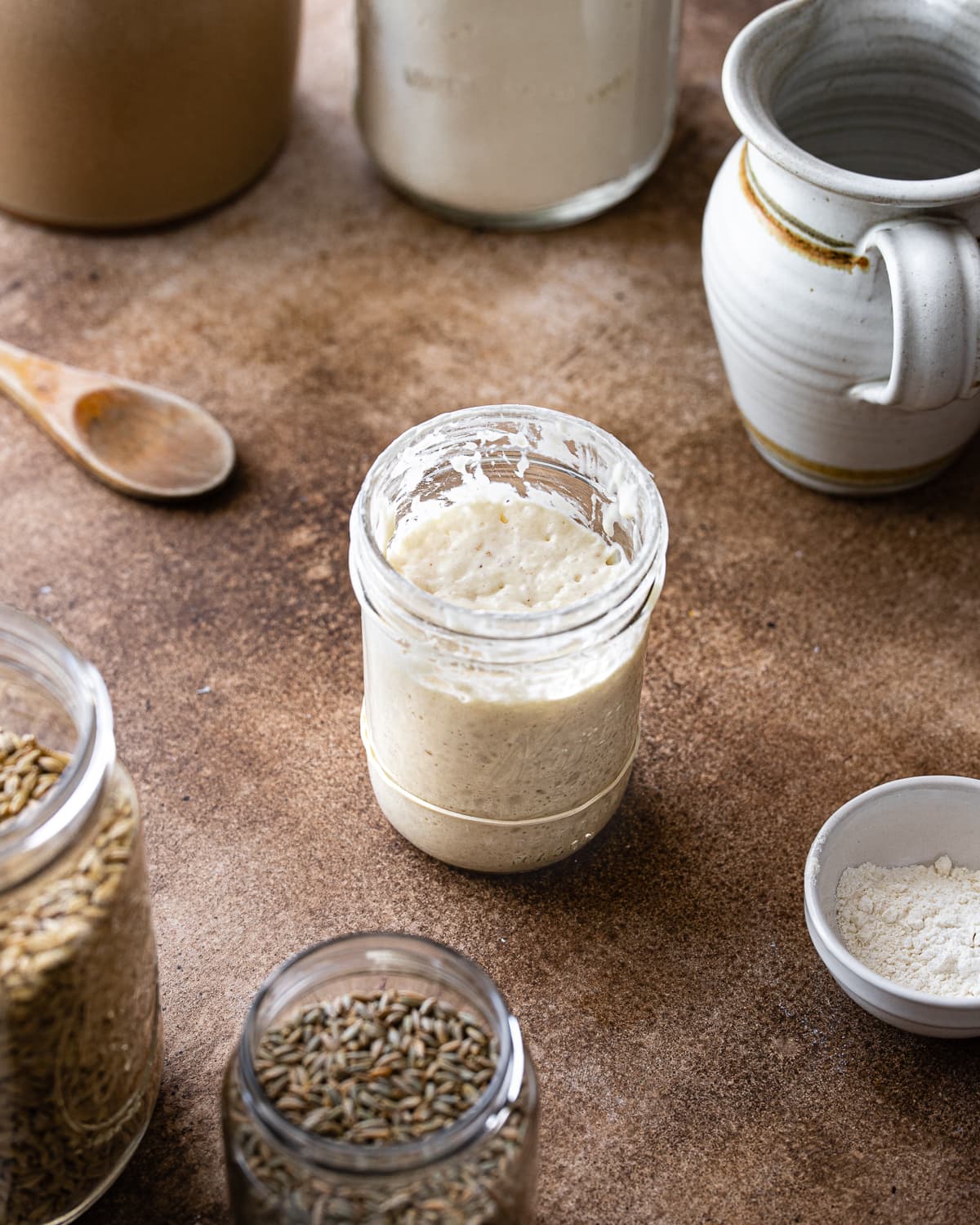
What you need
Spatula: I love spatula from OXO because the long handle allows me stir my starter without getting sticky stuff all over my hands. Plus the small head fits into any container and is great for scraping.
Jar: I've used Mason Jars from Ball and Kerr forever, but I've been really liking Weck jars lately since they have a wide mouth with no grooves where dried up starter can build up.
Kitchen scale: This cheap but mighty scale has been a staple in my kitchen since I started making bread. It's only $10 and has never had any issues, well worth the investment. I've tried lots of more expensive scales and this one continues to out perform and outlast them all.
All-purpose flour: I've fed my starter all-purpose flour from Central Milling for the last 4 years. It's an organic flour sold by a company comprised of passionate bakers who really care about the quality of their product. All-purpose is less expensive than bread flour and whole wheat and provides enough nutrition to your starter. You are going to go through so much flour over the life of your starter, all-purpose is an excellent option that will not break the bank. If you can't find Central Milling, use organic all-purpose from King Arthur Flour, Bob's Red Mill or your local mill.
Water: Always use filtered or spring water for your sourdough starter as tap water in the United States has a lot of chemicals that can adversely affect the microorganisms in your starter culture. We've used this Reverse Osmosis System for years and love it!
Why you should weigh your ingredients
Measuring your ingredients with a scale is more accurate than using volume measurements (cups and tablespoons), especially when you're measuring out such small quantities. The proportion of water and flour (hydration level) used in a sourdough recipe matters a lot to the overall consistency of your dough and bread, so accuracy is important.
Step-by-step instructions
STEP 1: Pull your sourdough starter out of the refrigerator
| Unfed starter | 28 grams | 2 tablespoons |
| All-purpose flour | 28 grams | ¼ cup |
| Water | 28 grams | 2 tablespoons |
- Add all of the ingredients in a clean jar and mix everything together until completely combined.
- Cover the jar loosely with a lid and place it in a warm spot for 24 hours. Since the yeast are still sluggish, they will take some time to metabolize the fresh flour.
24 hours after the first feeding your starter should look bubbly, well-risen and have an even distribution of bubbles throughout. If your starter is still flat and lifeless, repeat step 1.
STEP 2: Test your starter for readiness
Once your starter begins to show signs of life. Move on to testing it for readiness.
| Sourdough starter | 14 grams | 1 tablespoon |
| All-purpose flour | 28 grams | ¼ cup |
| Water | 28 grams | 2 tablespoons |
- Add all of the ingredients in your jar and mix everything together until completely combined.
- Cover the jar loosely and place a rubber band on your jar to mark the level where your freshly fed starter started. Set the jar in a warm place.
- Set a timer for 4 hours, check whether your starter has doubled.
- Repeat this process once your starter reaches its peak. If your starter rises dependable, in 4 to 6 hours, then it's ready to use for baking!
STEP 3: Prepare your sourdough starter for bread baking
For the best results, feed your starter every time it reaches its peak the day before you want to use it for baking. This strengthens yeast, making them more active and efficient. It also encourages the production of acids with deeper and sweeter flavors.
If I plan to mix my dough in the morning, then I’ll do this the night before. The high percentage of flour and water will ensure that your starter has enough food as it rises overnight.
| Sourdough starter | 7 grams | ½ tablespoon |
| All-purpose flour | 56 grams | ½ cup |
| Water | 56 grams | ¼ cup |
- Add all of the ingredients in your jar and mix everything together until completely combined.
- Cover the jar loosely and set in a warm place.
- Your starter is ready once it has doubled or tripled and will be ready to use up to 8 hours after being fed.
Signs indicating that my starter is ready for baking:
I don't bake with my starter unless it is displaying these qualities.
- An even distribution of bubbles throughout
- Thick and viscous consistency
- Sweet aroma that's not too acidic
- Rises predictably and dependably
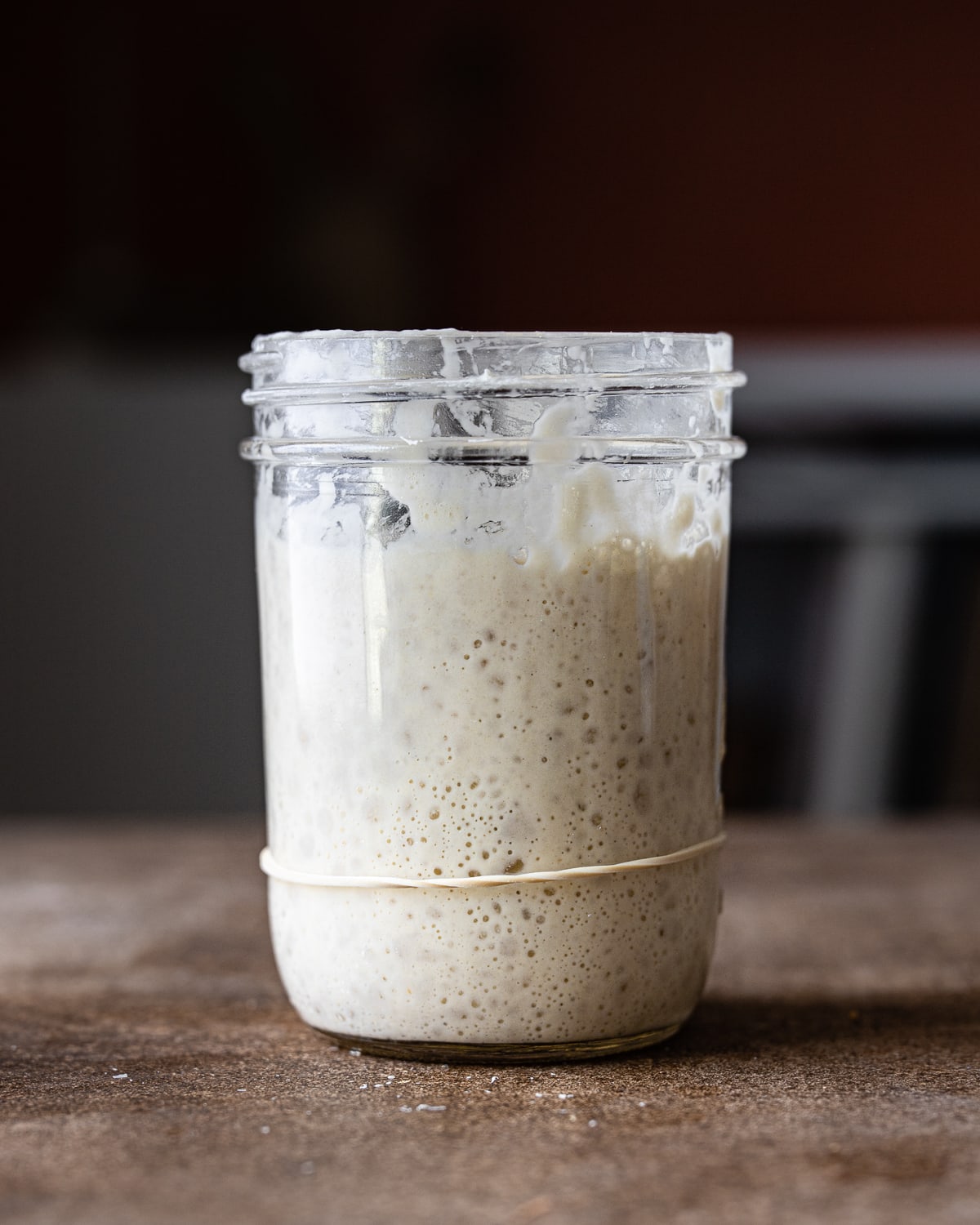
Why it’s best to wait until your starter has doubled before using it
The easiest way to guarantee consistently good results is to use your starter once it has at least doubled or tripled. Your starter is at its peak when its at its highest level right before it falls or deflates.
This is when there is the highest concentration of yeast and when they are the most active and most efficient at fermenting dough.
When it’s OK to bake with your starter from the fridge
Just like each starter is truly unique, every baker’s experience with sourdough is different! If you’re an experienced baker and are familiar with working with a cold sourdough starter that has been kept in the refrigerator for a long time and you’ve had success, then it’s totally OK to use your starter straight from the refrigerator.
You can utilize a cold starter in any sourdough discard recipe. These recipes don't require a sourdough starter for leavening, so you can use your starter directly from the fridge. These recipes offer a fantastic solution for using excess sourdough. They also offer a speedy alternative while giving your bakes a boost of flavor.
For example, Sourdough Irish Soda Bread and Sourdough Discard Flatbread utilize baking soda and baking powder instead of sourdough starter for leavening. Additionally, my Whole Wheat Sourdough Discard Sandwich Bread and Sourdough Discard Focaccia rely on commercial yeast for rising.
Help!!! I keep feeding my starter but it won’t rise
Feeding a starter that continues to look flat and lifeless can be exceedingly frustrating. But don't worry, starters are extremely resilient, and unless your starter has grown mold it's still viable.
Here are some reasons your starter may look lifeless and is not be rising like it should:
Issue: Your kitchen is too cold
One reason your starter won’t rise may simply be because your kitchen is too cold. Fermentation occurs at an optimum temperature of 78 to 80.
Solution: Give your starter a boost by keeping it in a warm spot like your microwave oven or your oven off with the light on. Depending on where you are in your sourdough journey, you may want to think about investing in a proofing box which will keep your starter at the ideal temperature.
Issue: Yeast has weakened
Maybe you've kept your starter in the fridge for too long and it's taking a longer time for your yeast to rebound.
Solution: Give your starter an infusion of rye flour. Rye has an abundance of amylase and other nutrients, this helps expedite the conversion of starches into sugar and could be the boost your starter needs to restart activity. Try adding rye to your feeding routing for a few days until your starter becomes good and bubbly!
Issue: Bubbly but won't rise
The hydration level of your starter and the type of flour you feed it could also affect its consistency and how it rises. A starter made with whole wheat flour or rye flour could be active and viable but may not rise as high as one that’s made with white flour. A lower hydration starter could also have a thicker consistency that won’t increase in volume as much.
Solution: Not all starters will double, especially if its made with different flours or maintained at a lower hydration level. As long as there is an even distribution of bubbles throughout your starter it's probably completely fine! Each starter is unique and what you feed it could affect its rise and consistency.
FAQs
Rye has a much lower protein level than white flour. A sourdough starter made with rye flour can’t form strong gluten bonds, and isn’t able to capture gas formed during fermentation. So although your starter may be active, it may not double or triple.
It’s extremely difficult to kill your starter. Unless it grows mold, your starter is still alive and well. Yeast and lactic acid bacteria in your sourdough starter prevent the species of bacteria that cause spoilage and mold from growing on your culture. If you see any fuzzy growth or any shades of blue, green, pink, or beige on the surface of your starter, then its best to throw it away and start over. By the time you see any discoloration and growth on your starter, it means that the entire culture is infected, it may be unsafe to simply scrape it away.
The number of times you need to feed your starter really depends on your environment and the individual health of your starter. Continue to refresh your starter until it rises predictably before using it in a recipe.
Knead More Help?
Have more questions about this topic? Let me know in the comments!
Pin this post on Pinterest for easy access anytime!
Share your baking triumphs on Instagram - don't forget to tag @makeitdough, I love showcasing your bakes in my stories!
⭐ THANK YOU ⭐

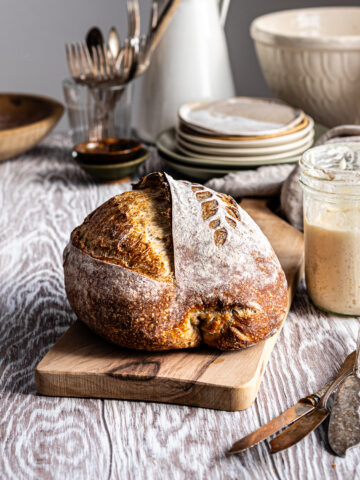
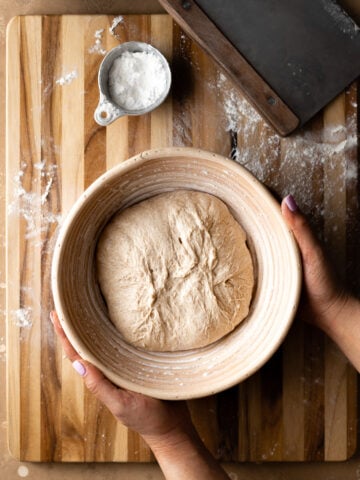
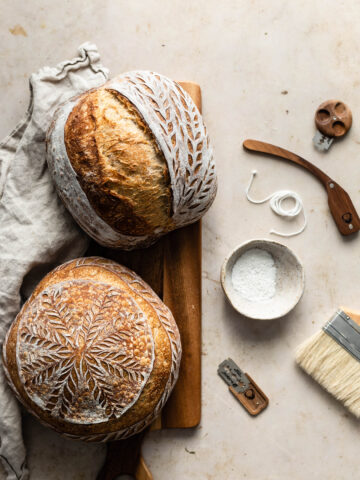
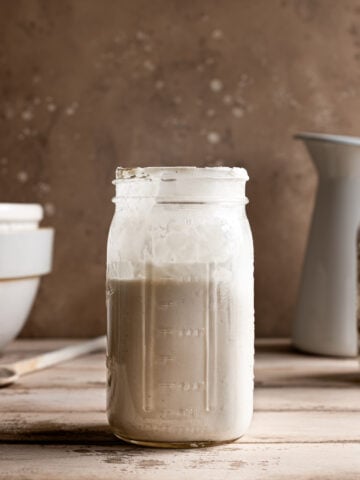

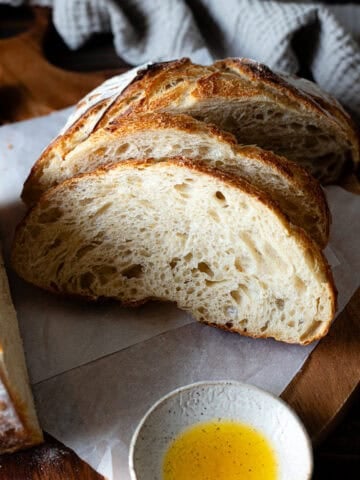
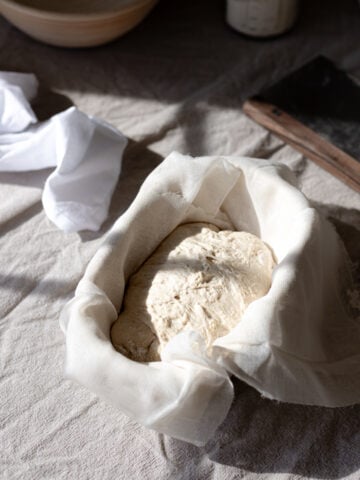
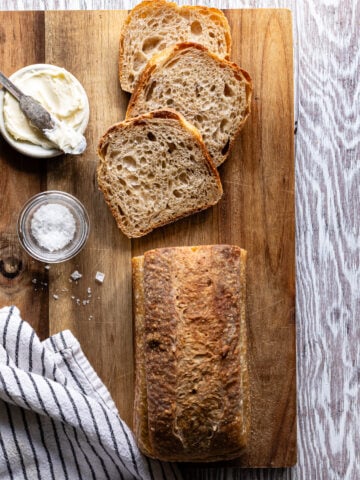
Kathy Bizjack says
Can I use fresh mushrooms for a topping with the Foccachia Bread/starter recipe? If so, shall I saute them first?
Hannah Dela Cruz says
I would definitely recommend sautéing the mushrooms first, you can even microwave them for 1 minute.
Angie Corrado says
hi there, if I want to bake sour dough bread I take my starter out of the fridge and use 113 grams starter, 113 grams flour and 113 grams of water an let sit until it doubles before baking but what is the process for the remaining starter. do I hold back 113 grams of the starter and mix it with flour and water and put back in fridge until it's scheduled feeding?
thanks 😊
Hannah Dela Cruz says
You can hold back whatever starter you don't need for your recipe. Feed it again and return it to the fridge. Or you can keep it out and continue feeding everyday.
Brooke says
Hello, I have a mature sourdough starter. I've kept on the counter for months. I just find myself using more discard recipes than baking artisan bread. I want to keep my starter in the fridge.
When I'm ready to make a recipe with active starter, do I need to let it come to room temperature before using? I saw you said not to use it if it is acting as a leavener. I wanted to make sure I could still use it for my artisan breads. Thanks.
Hannah Dela Cruz says
Hi! If you'd like to start keeping your starter in the fridge - feed it right before you refrigerate it. Then feed it right after you take it out (no need to let it come to room temp). I like to feed mine a few times to make sure its rising at a predictable rate before using it to bake again.
If you're using discard that you are trying to revive to make it into an active starter again - you should follow the same process.
jim@ says
If my starter is refrigerated does it need to come to room temperature before I feed it
Hannah Dela Cruz says
Hi Jim - no you can feed your starter directly from the fridge. The yeast will act a little sluggish since they will be recovering from the cold temps. But fermentation activity will pick up as your starter warms up. It would be great if they had a fresh source of nutrition as they start "waking up." I usually leave my starter to feed on the new flour for at least 24 hours before feeding again.
Heather Eckert says
Just some website feedback. The ads on your website are interfering with my use of it. Twice now when trying to X out the ads or even just scroll through the page I’ve been bumped out of what I was reading and haven’t been able to go back and find it. Very annoying since I’m really interested I what you have written.
Hannah Dela Cruz says
Hello, and a warm welcome to my blog! Your visit means a lot to me, and I genuinely appreciate your interest in my content as well as your valuable feedback. I want to kindly share that the advertisements on this site play a crucial role in making this content freely accessible to you. The amount of ads on the site is carefully considered to strike a balance between sustaining the blog and ensuring a positive browsing experience for you. The revenue generated from these ads covers expenses such as hosting and various other fees involved in website maintenance. Additionally, it enables me to support myself and my family. Your understanding and support are truly cherished. Thank you!